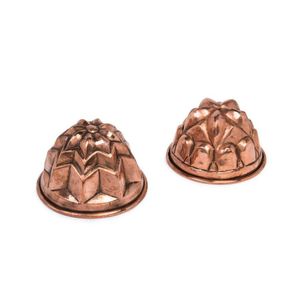Victorian Medusa Wall Fountain Head
A Victorian terracotta and lead mounted wall fountain head of Medusa, the gorgon with a scrolled head dress wreathed in snakes, height 56 cm. Provenance: Haslam and Whiteway, London. Christie's Australia, the collection of John Schaeffer at Rona, 15-16 May, 2004, lot 600. Purchased from the above
You must be a subscriber, and be logged in to view price and dealer details.
Subscribe Now to view actual auction price for this item
When you subscribe, you have the option of setting the currency in which to display prices to $Au, $US, $NZ or Stg.
This item has been sold, and the description, image and price are for reference purposes only.
- Lead Statuary and Objects - Lead is a soft, heavy, with a low melting point, making it suitable for detailed moulding. Because of its durability and resistance to corrosion it is suitable for outdoor applications, which has led to its extensive use in garden statues and objects since Roman times.
It develops a silver-grey to lead-grey patina over time.
For garden statuary and objects, it is also a less expensive material to use, than bronze or stone.
However its softness is also a disadvantage as garden statuary made from lead is easily damaged, especially if moulded as a hollow, as for example, in a human or animal form. - Victorian Period - The Victorian period of furniture and decorative arts design covers the reign of Queen Victoria from 1837 to 1901. There was not one dominant style of furniture in the Victorian period. Designers used and modified many historical styles such as Gothic, Tudor, Elizabethan, English Rococo, Neoclassical and others, although use of some styles, such as English Rococo and Gothic tended to dominate the furniture manufacture of the period.
The Victorian period was preceded by the Regency and William IV periods, and followed by the Edwardian period, named for Edward VII (1841 ? 1910) who was King of the United Kingdom and the British Dominions and Emperor of India for the brief period from 1901 until his death in 1910. - Terracotta - Terracotta is lightly fired earthenware, red or reddish-brown in colour, used in ancient times. Fired at higher temperatures terracotta was used in the nineteenth century for decorative vases and similar objects, but rarely for utilitarian goods. Other uses for terracotta include roofing tiles, garden pots and ornaments. Glazed terracotta is known as faience.
This item has been included into following indexes:
Visually similar items

A circular copper mould with ribbed embossed design, French, 19th century, 18 cm diameter
Sold by
in
for
You can display prices in $Au, $US, $NZ or Stg.

Old figures, coastal Sepik area, Papua New Guinea (2) Height 20 to 25 cm
Sold by
in
for
You can display prices in $Au, $US, $NZ or Stg.

A Victorian fold out picture locket, featuring five hinged compartments with enamel and foliate detail, in 14ct gold.
Sold by
in
for
You can display prices in $Au, $US, $NZ or Stg.

Two circular copper moulds embossed with star designs, French, 19th century, 12 cm and 11.5 cm diameter
Sold by
in
for
You can display prices in $Au, $US, $NZ or Stg.
